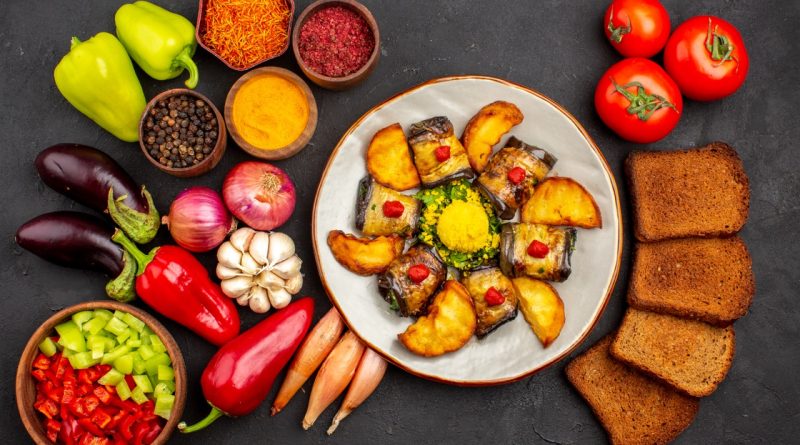How to Cook Without Recipes: Mastering the Art of Improvisation
Cooking without recipes can be a liberating and rewarding experience, allowing you to express your creativity in the kitchen. Mastering the art of improvisation not only builds your confidence but also enhances your understanding of flavors and techniques. Whether you’re a seasoned chef or a novice cook, this guide will help you develop the skills necessary to craft delicious meals without relying on written instructions.
Understanding the Fundamentals of Flavor Combinations
At the core of cooking lies an understanding of how different flavors interact. Familiarizing yourself with the basic components of flavor—sweet, salty, sour, bitter, and umami—will empower you to create balanced dishes. For example, pairing sweet elements, like honey or fruit, with acidic components, such as vinegar or citrus, can create a harmonious blend that excites the palate. Experimenting with different ratios and combinations will deepen your comprehension of flavor dynamics.
Another essential aspect of flavor is the concept of seasoning. Salt enhances natural flavors, while herbs and spices bring complexity to a dish. Consider the foundational herbs like basil, thyme, and rosemary, which can dramatically alter the profile of your meals. Learning how and when to introduce asafetida or smoked paprika, for instance, can distinguish your cooking style and surprise your guests with unexpected layers of taste.
Additionally, regional cuisines offer insight into traditional flavor pairings that can inspire your improvisation. Mediterranean dishes often feature tomatoes, olives, and garlic, while Asian cuisines might emphasize soy sauce, ginger, and sesame. Studying these combinations can provide a guide to creating your own unique dishes, allowing you to draw from a rich tapestry of culinary history while still embracing your personal flair.
Essential Techniques for Cooking Without a Recipe
One of the most valuable techniques you can master is the art of sautéing. This method involves cooking food quickly in a small amount of fat, allowing you to develop flavor while maintaining the integrity of the ingredients. Start with aromatics like onions and garlic, then add your main ingredients, adjusting the heat as necessary to achieve the desired doneness. This technique is versatile and can be applied to a wide range of proteins and vegetables.
Another fundamental technique is roasting, which can transform the textures and flavors of your ingredients. Roasting vegetables in the oven caramelizes their natural sugars, resulting in a rich, deeply flavored dish. By experimenting with different temperatures and cooking times, you can learn how to achieve the perfect balance between tenderness and crispness, using whatever vegetables you have on hand.
Finally, mastering the art of improvisational sauces can elevate your dishes significantly. Start with a base, such as broth or cream, and then add your choice of herbs, spices, and acids to create depth. Even a simple pan sauce made from the drippings left in your skillet can transform a basic protein into a gourmet experience. The key is to taste as you go and make adjustments based on the flavors you want to enhance or balance.
Building a Well-Stocked Pantry for Creative Meals
A well-stocked pantry is the backbone of any improvisational cooking endeavor. Begin by stocking essential staples such as grains, legumes, and pasta, which can serve as the foundation for countless meals. With these items on hand, you can whip up everything from hearty stews to light salads, depending on your mood and the seasonality of ingredients.
In addition to staples, having a selection of canned goods, such as tomatoes, beans, and fish, can expand your culinary possibilities significantly. These items provide convenience and can be used to create a base for soups, sauces, or quick weeknight dinners. Don’t forget to include a variety of oils, vinegars, and condiments, which are crucial for adding flavor and depth to your dishes.
Finally, keep a diverse range of spices and herbs available to inspire your creativity. From common seasonings like cumin and paprika to more exotic ones like sumac and za’atar, these ingredients will allow you to experiment with global flavors. Regularly rotating your pantry items and trying out new products will keep your cooking exciting and help you discover new combinations that can lead to culinary masterpieces.
Tips for Developing Your Unique Culinary Style
Developing your unique culinary style requires a mindset of exploration and experimentation. Start by identifying the flavors and ingredients you love most, and use them as a foundation for your dishes. By focusing on what excites you, you’ll be more inclined to experiment and refine your approach over time. Documenting your culinary adventures in a journal can help you remember what worked and what didn’t, creating a personalized guide for future meals.
Another way to cultivate your style is to learn from others. While cooking without recipes emphasizes personal expression, observing the techniques and flavor profiles used by other chefs can provide invaluable insights. Attend cooking classes, watch online tutorials, or simply invite friends over for a collaborative cooking session. Engaging with a community of cooks can inspire you to think outside the box and adopt new methods that resonate with your preferences.
Lastly, remember that developing a unique culinary style takes time and patience. Embrace failures as learning opportunities and celebrate your successes, no matter how small. Consistently practicing improvisation will not only enhance your cooking skills but also allow your personal style to evolve organically. The kitchen is a space for innovation—don’t be afraid to let your personality shine through in every dish you create.
Cooking without recipes is an empowering journey that encourages creativity and self-expression. By understanding the fundamentals of flavor combinations, mastering essential techniques, building a well-stocked pantry, and developing your unique culinary style, you can elevate your cooking to new heights. Embrace the freedom of improvisation, and you’ll discover that the art of cooking can be as fulfilling as it is delicious.
